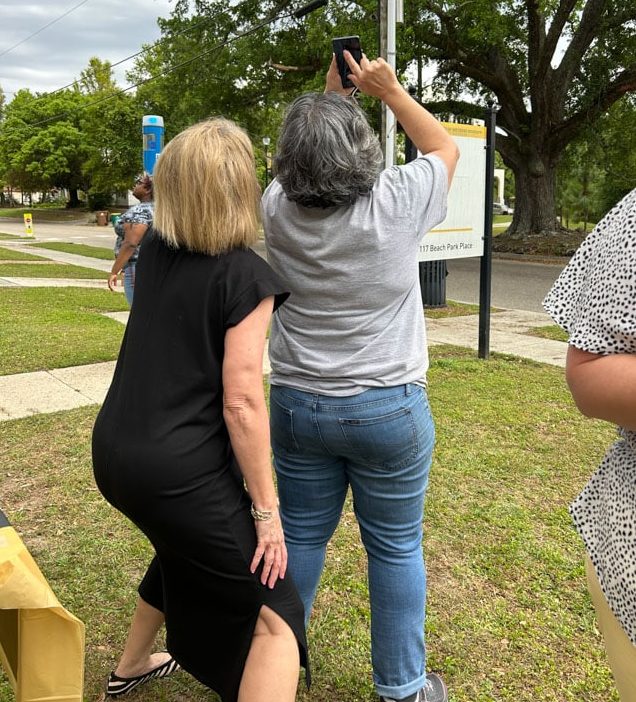Teresa Lampe, STEM Education Researcher at the Center for STEM Education, was excited to be a part of a once-in-a-lifetime opportunity.
“The alignment of the earth, moon, and sun to provide solar eclipse is an exciting and interesting science phenomenon,” said Lampe. “This is a great opportunity for students, staff and the community to view this rare wonder of the natural world.”

Students gathered in chairs, blankets, and danced along to music. Refreshment tables displayed bowls of Moon Pies, Sun Chips, Milky Ways, and other eclipse-themed foods. Both watch parties distributed eclipse-viewing glasses. At the health center, a table display of skincare wellness and sunscreen protection presented students with opportunities to ask questions and prepare for the warmer months ahead.
Jennifer Larson, Gulf Park Health Center (GPHC) Office Manager, wanted to provide a way to bring the USM community together.
“Gulf Park Health Center has been focusing on several wellness initiatives this year and having the Solar Eclipse Watch Party is an opportunity for us to continue with those efforts,” said Larson. “GPHC wants to do our part to help educate our students, staff, and faculty on ways to protect themselves from the harmful effects of the sun while still enjoying our beautiful outdoors.”
The viewing began at 12:33 p.m., reaching maximum at 1:53 p.m. and ending around 3:11 p.m. with 86 percent coverage at maximum. In the continental United States, a total solar eclipse will not be present for another 20 years.
Chris Sirola, Professor of Astronomy at USM, appreciates the experience the eclipse and the anticipation it brings to many scientists.
“Professional astronomers love total eclipses because they allow us to see the outer atmosphere of the sun. The part of the sun we normally see (the photosphere) is about 1 million times brighter than its other regions,” explains Sirola, “But those other sections (the chromosphere, the corona) are about as bright as a full moon on their own, so they show up pretty easily when there’s a total eclipse.”
Learn more about the Center for STEM Education and the Gulf Park Health Center.